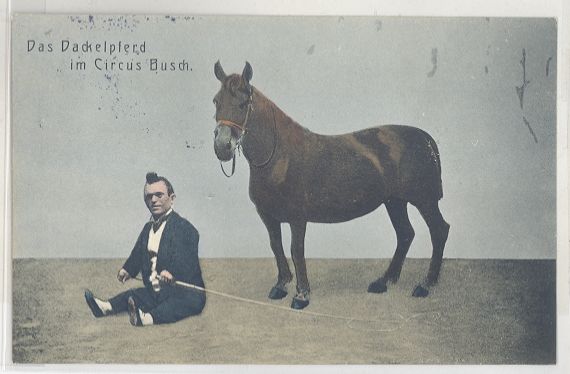|
EVC2
Limbin (LBN) is a protein that is part of the EvC complex that consists of EvC and EvC2 genes, the activity of which is critical in bone formation and skeletal development. The complex positively regulates ciliary Hedgehog (Hh) signaling due to the ciliary localization. A mutation in these genes is associated with The Ellis-van Creveld (EvC) syndrome. EvC or otherwise known as Chondroestodermal dysplasia is a disorder inherited by the offspring of carriers of the mutated recessive gene and a non-mutated dominant gene leading to expression of chondrodysplasia and dwarfism. Bone growth occurs due to continuous proliferation and differentiation of chondrocytes along with endochondral ossification at both ends of a long bone. The mutations in LBN cause premature termination of encoded proteins resulting in shortening of long bones. Other characteristics accredited to a mutation in LBN include difficulty breathing due to shorted ribs, shortened tongue, dysplastic fingernails, a ... [...More Info...] [...Related Items...] OR: [Wikipedia] [Google] [Baidu] |
Hedgehog Signaling Pathway
The Hedgehog signaling pathway is a signaling pathway that transmits information to embryonic cells required for proper cell differentiation. Different parts of the embryo have different concentrations of hedgehog signaling proteins. The pathway also has roles in the adult. Diseases associated with the malfunction of this pathway include cancer. The Hedgehog signaling pathway is one of the key regulators of animal development and is present in all bilaterians. The pathway takes its name from its polypeptide ligand (biochemistry), ligand, an intracellular signaling molecule called Hedgehog (''Hh'') found in fruit flies of the genus ''Drosophila''; fruit fly larva lacking the ''Hh'' gene are said to resemble hedgehogs. ''Hh'' is one of Drosophila's segment polarity gene products, involved in establishing the basis of the fly body plan. Larvae without ''Hh'' are short and spiny, resembling the hedgehog animal. The molecule remains important during later stages of embryogenesis and M ... [...More Info...] [...Related Items...] OR: [Wikipedia] [Google] [Baidu] |
Osteochondrodysplasia
Osteochondrodysplasia is a general term for a disorder of the development (dysplasia) of bone ("osteo") and cartilage ("chondro"). Osteochondrodysplasias are rare diseases. About 1 in 5,000 babies are born with some type of skeletal dysplasia. Nonetheless, if taken collectively, genetic skeletal dysplasias or osteochondrodysplasias comprise a recognizable group of genetically determined disorders with generalized skeletal affection. Osteochondrodysplasias can result in marked functional limitation and even mortality. Osteochondrodysplasias subtypes can overlap in clinical aspects, therefore plain radiography is absolutely necessary to establish an accurate diagnosis. Magnetic resonance imaging can provide further diagnostic insights and guide treatment strategies especially in cases of spinal involvement. Early diagnosis, and timely management of skeletal dysplasia are important to combat functional deterioration. Types Achondroplasia ''Achondroplasia'' is a type of autosomal ... [...More Info...] [...Related Items...] OR: [Wikipedia] [Google] [Baidu] |
Dwarfism
Dwarfism is a condition wherein an organism is exceptionally small, and mostly occurs in the animal kingdom. In humans, it is sometimes defined as an adult height of less than , regardless of sex; the average adult height among people with dwarfism is , although some individuals with dwarfism are slightly taller. ''Disproportionate dwarfism'' is characterized by either short limbs or a short torso. In cases of ''proportionate dwarfism'', both the limbs and torso are unusually small. Intelligence is usually normal, and most have a nearly normal life expectancy. People with dwarfism can usually bear children, though there are additional risks to the mother and child dependent upon the underlying condition. The most common and recognisable form of dwarfism in humans (comprising 70% of cases) is achondroplasia, a genetic disorder whereby the limbs are diminutive. Growth hormone deficiency is responsible for most other cases. Treatment depends on the underlying cause. Those ... [...More Info...] [...Related Items...] OR: [Wikipedia] [Google] [Baidu] |
Endochondral Ossification
Endochondral ossification is one of the two essential processes during fetal development of the mammalian skeletal system by which bone tissue is produced. Unlike intramembranous ossification, the other process by which bone tissue is produced, cartilage is present during endochondral ossification. Endochondral ossification is also an essential process during the rudimentary formation of long bones, the growth of the length of long bones, and the natural healing of bone fractures. Growth of the cartilage model The cartilage model will grow in length by continuous cell division of chondrocytes, which is accompanied by further secretion of extracellular matrix. This is called interstitial growth. The process of appositional growth occurs when the cartilage model also grows in thickness due to the addition of more extracellular matrix on the peripheral cartilage surface, which is accompanied by new chondroblasts that develop from the perichondrium. Primary center of ossifica ... [...More Info...] [...Related Items...] OR: [Wikipedia] [Google] [Baidu] |
Dysplastic Nail
Dysplastic nails are a cutaneous condition, and may be a subtle finding of ridging, flaking, or poor growth of the nails, or more diffuse with nearly complete loss of nails. This condition may be seen in a number of syndromes, including Dyskeratosis congenita and Nail–patella syndrome. See also * Nail disease * List of cutaneous conditions Many skin conditions affect the human integumentary system—the organ system covering the entire surface of the body and composed of skin, hair, nails, and related muscle and glands. The major function of this system is as a barrier against t ... References {{Reflist External linksFacial dysmorphism, skeletal anomalies, congenital glucoma, dysplastic nails: Mild Rubinstein-Taybi Syndrome AJOL.info. Shawky, Rabah M.. Elsayed, Nermine S.. Seifeldin, Neveen S.. Conditions of the skin appendages ... [...More Info...] [...Related Items...] OR: [Wikipedia] [Google] [Baidu] |

